
In January and February, the spring and summer may seem a long way off. But when you grow your own food at home, it is important to plan ahead.
You may be surprised by how much you can do to prepare for the coming year – even before any hint of spring has appeared.
There are even seeds to sow this early in the year!
Related Reading: 23 Seed Catalogs You Can Request For Free (& Our 4 Favorite!)
You may already have planted out bare root fruit trees, canes or shrubs, or be considering doing so soon. Perhaps you may also soon start chitting your potatoes for an earlier potato harvest.
But you may be surprised to learn that it is not too early to sow a range of seeds for annual vegetable crops.
Many gardeners wait until the last frost date approaches before they start sowing and growing. But sow seeds in winter indoors or under cover and you can get a head start.
By starting early, you can make the most of a short growing season and dramatically increase your annual yield.
Related Reading:
Sowing Seeds Indoors

Sowing seeds indoors, especially with the aid of a heated propagator, dramatically increases the range of crops that you will be able to germinate successfully this early in the year.
You can purchase a suitable heated propagator online, or make your own.
For many seeds, a heated propagator will not be essential, however. You could simply reuse a plastic food container to make a propagator for cool climate seeds.
When sowing seeds indoors early in the year, the main challenge will be low light levels, and short daylight hours.
Seeds grown indoors early in the year can often end up leggy and listless.
They can be weakened as they stretch upwards searching for light. LED grow lights can help indoors gardeners to avoid this issue.
When sowing seeds indoors, however, light levels are not the only issue to contend with. It is also important to choose a suitable spot within your home.
Fluctuating temperatures can lead to patchy germination. So it is important to choose a location where temperatures remain as static as possible.
Avoid sowing seeds close to a heat source such as a radiator or oven, or too close to a door that is opened frequently.
Understanding Germination
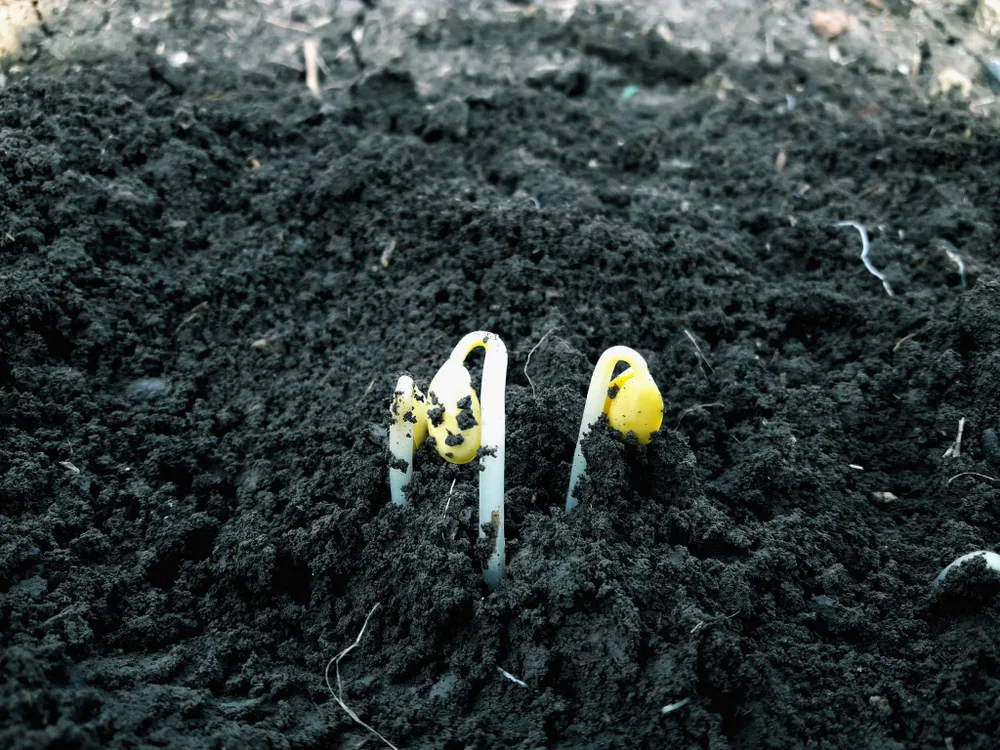
Wherever you sow your seeds, and wherever they are to grow, it is important to understand germination.
Germination is simply the word used to describe the growth of a seed into a seedling.
Effective germination for common home-grown crops generally requires:
Viable Seeds
Seeds that have been stored correctly, and are not too old.
Water
Seeds must have enough water for the seed coating to break down and metabolic processes to take place. But they must not be over-watered or become waterlogged. Of course, some seeds will require a lot more water than others.
Oxygen
Before green growth emerges, seeds rely on oxygen for energy. The right growing medium is essential. It will be aerated enough to allow oxygen to reach the seeds.
Note that it is important that the growing medium does not become compacted. It is also crucial not to bury seeds too deeply. Make sure you understand how deep to position each seed you wish to plant.
The Right Temperatures
Different seeds germinate at different temperatures. Most seeds will germinate best within a certain temperature range. There is also a minimum temperature at which germination will take place.
If you provide the right germination and growing conditions, you can grow a wide range of edible crops, wherever you live.
3 Essential Pieces Of Kit For Starting Seeds
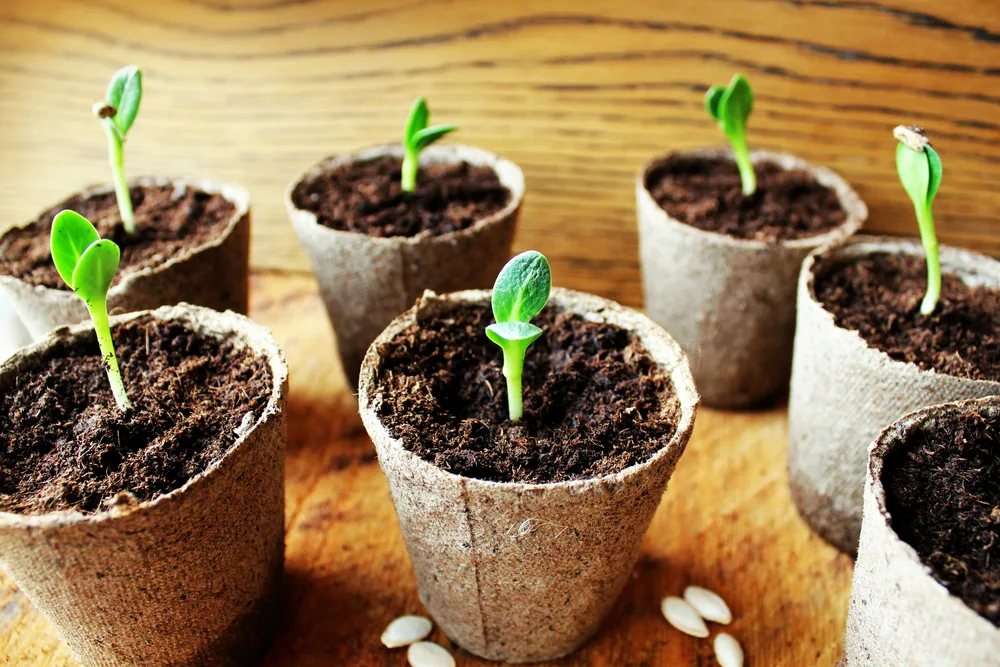
There’s a lot of advanced equipment that can help you with starting seeds, but these three things are the absolute minimum requirements.
1. High Quality Seeds
This goes without saying. Without high quality vegetable seeds, you won’t grow any plants.
It’s best to save your own seeds from previous harvests – but failing that buy local from a reputable supplier or purchase seeds online.
You can see our top 11 picks for garden seed suppliers in this article, but the most popular are Baker Creek Seeds.
2. High Quality Seed Starting Mix
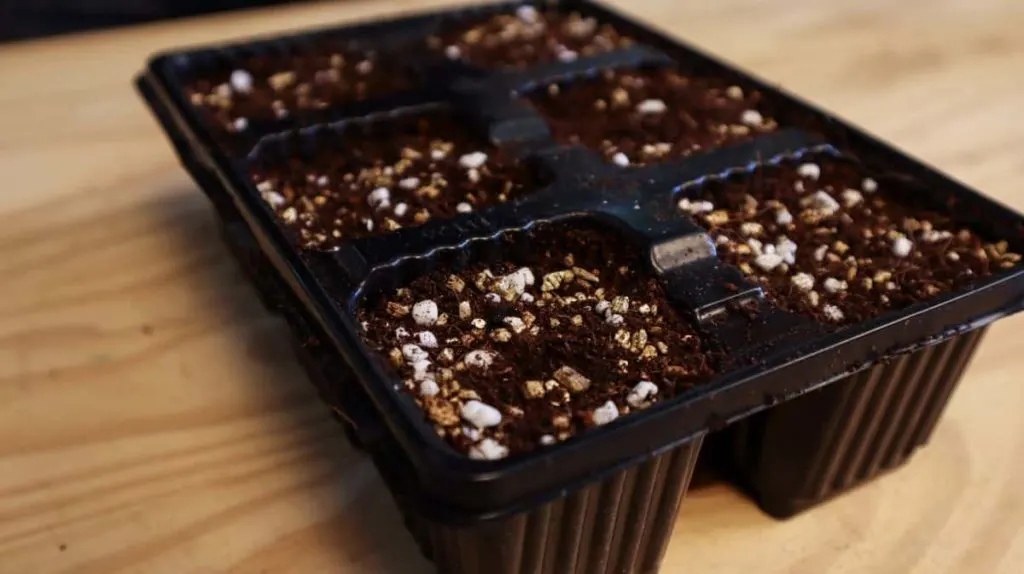
A high quality, organic seed starting mix is essential for giving your seeds the right start.
You can make your own seed starting mix by mixing two parts coconut coir, one part perlite and one vermiculite. Here’s a tutorial for making your own peat free seed starting mix.
Alternatively, this Espoma Organic Seed Starting Mix is one of the most popular ready-made options.
3. Containers
You’ll want a container that can hold at least two inches of your potting mix. In an effort to reduce plastic use, it’s best to avoid plastic pots, too.
These 3 inch peat pots are ideal. The whole pot biodegrades, so once you’re ready to transplant your seedlings you simply take the whole pot and pop it in the ground.
15 Vegetable Seeds To Sow Before Spring
Here are fifteen seeds to sow before spring. These types of edible vegetables can all be sown before the last frost in a range of temperate climate areas.
1. Tomato Seeds
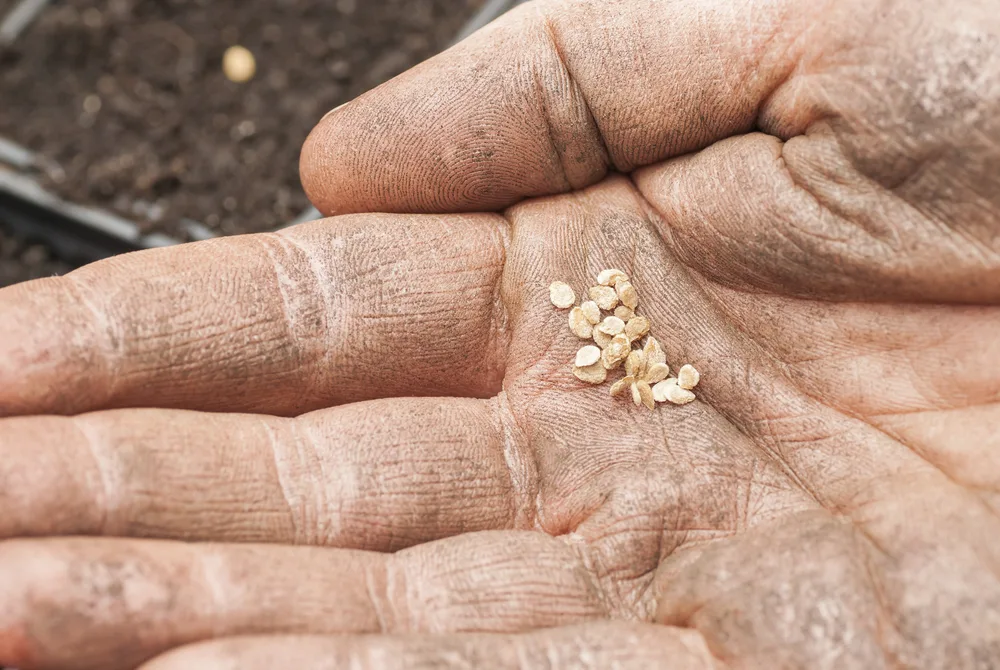
Tomatoes are a warm season crop. So you might be surprised to learn that you can start them well before warm weather arrives.
Sowing tomato seeds in January or February indoors can help make sure you gain a viable crop by the end of your short growing season.
If you have a short growing season, choose short season tomato varieties for the best results.
Tomatoes will germinate best at temperatures between 60 and 80F. (Though they can germinate at temperatures as low as 40F., they will not germinate as effectively.)
It is unlikely that you will be able to achieve these temperatures outdoors in winter, or in a domestic greenhouse or polytunnel. Most gardeners, therefore, will start tomatoes indoors, in a heated space or with a heated propagator.
Grow lights will help stop tomatoes and other warm climate crops from growing too leggy when planted early.
2. Sweet Pepper
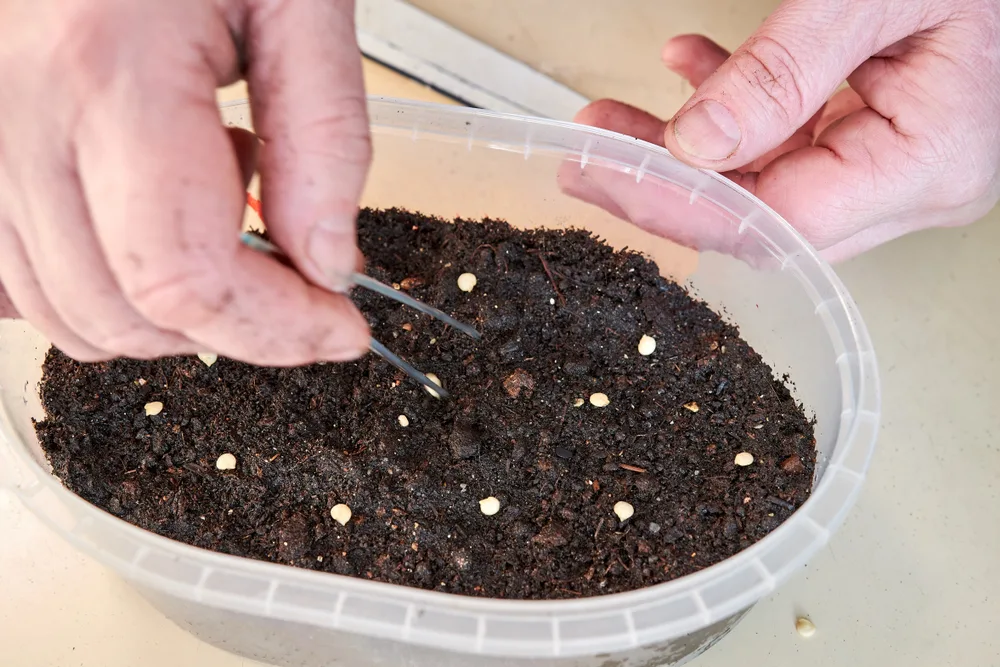
Sweet peppers will provide the best yield where there is a long growing season. When you have a longer growing season, there will be more time for the warm-season fruits to develop.
If you have a short growing season, however, you can still grow this crop.
Starting seeds indoors long before the last frost in your area will give you a better chance of success.
Like tomatoes, sweet peppers need higher temperatures for germination.
Peppers of all kinds germinate best at temperatures between 65 and 95 F. They will not germinate below a minimum of around 60 F.
Again, as with tomatoes, grow lights can be a good idea.
3. Chilli Pepper

If you like spicy food, chilli peppers can be another great addition to a home-grown menu. Chilli peppers are another warm climate crop.
These plants too will do best when planted early indoors in a short-season climate. As with tomatoes and sweet peppers, you can also sow chilli peppers indoors while winter is still in full force.
In order to achieve the temperatures required for germination, a heated propagator may be useful when sowing chilli pepper seeds.
Especially if your chosen indoors growing area cannot be kept consistently above 65 F.
4. Eggplants for Indoors Crops
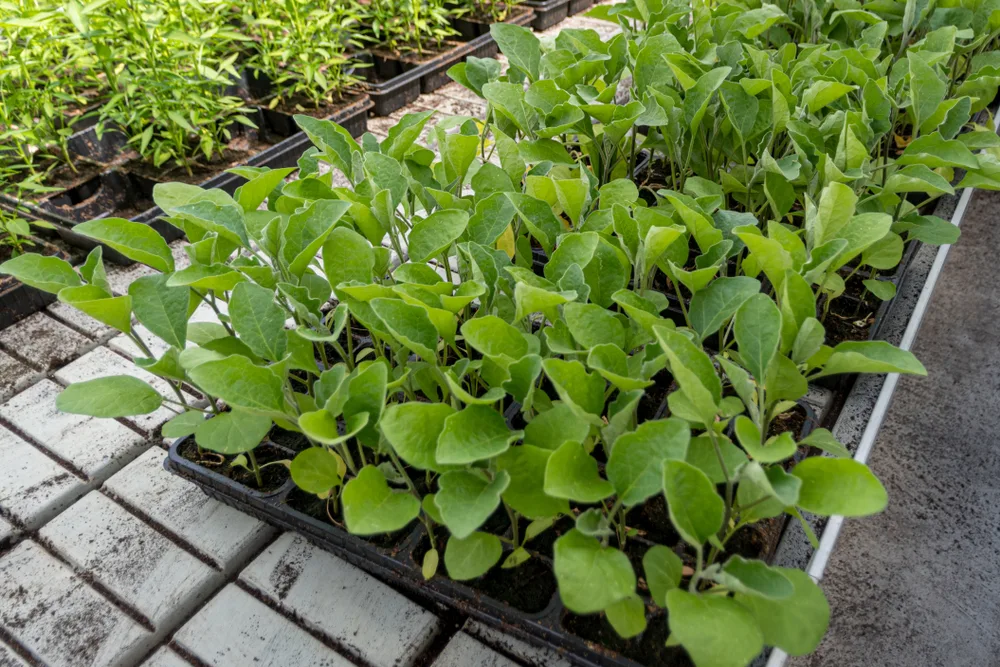
One final warm climate crop that cool climate gardeners could consider starting indoors is the eggplant. Eggplants are in the same plant family as tomatoes and peppers, and needs a long, warm summer to reach maturity.
Most US gardeners should be able to grow eggplants outdoors or in a polytunnel or greenhouse after an indoors start.
In the south, you can sow later, directly outdoors. But in cooler climes and in the north, it is generally easier and more effective to grow these as an indoors crop.
Wherever they ultimately grow, germinate seeds early indoors. Be sure to keep temperatures above 70F, and ideally above 75F.
5. Peas
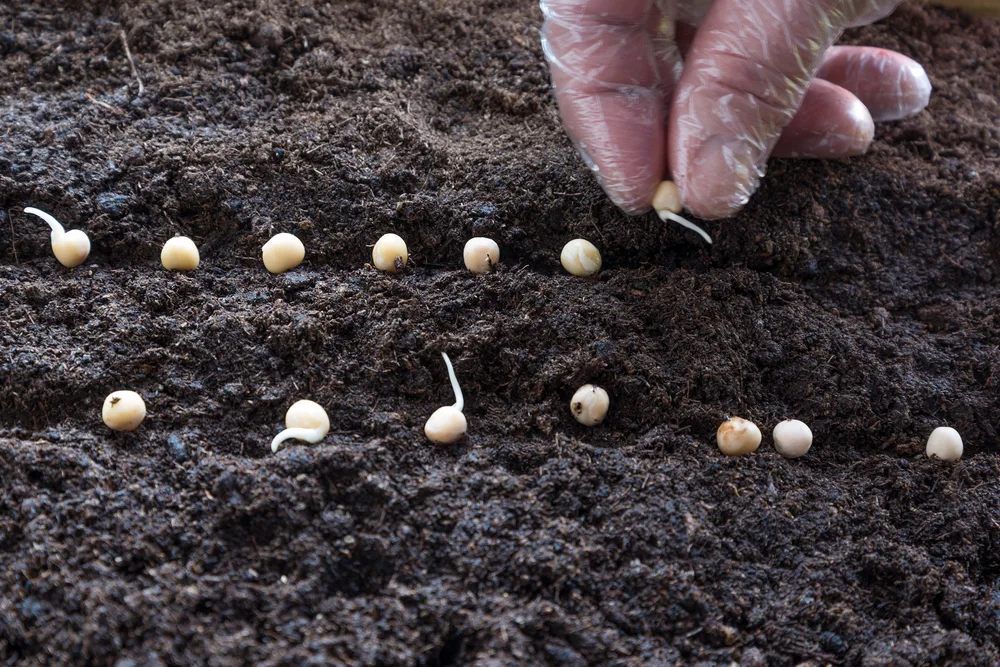
Peas are a great crop for beginners. There are plenty of early pea seeds to sow before spring.
You can choose varieties for mange tout or sugar snap peas, or early peas for podding. You could also sow peas on a windowsill for a quick crop of pea shoots at any time of the year.
Peas will germinate at temperatures between 40F and 75F. So you will have a little more leeway about where you sow them than with warmer climate crops.
You can easily sow them on a windowsill indoors. But in many climate areas, you can also consider growing them in a covered growing area, or under cloches.
Just watch out for birds and rodents.
They may eat the seeds before they sprout, especially early in the season when less wild food is available.
6. Fava Beans

Fava beans are a hardy crop that can also be a good option for early planting. There are several varieties, such as Aquadulce Claudia, that are suitable for overwintering in a range of cooler climate zones.
These can also be sown early in these areas, and even in cooler ones with a little protection.
Sow early and you can have beans much earlier in the season. You do not have to wait until spring.
The ideal temperature for fava bean germination is around 52F.
But they will achieve good results from around 45F. as long as you can provide suitable growing conditions.
7. Onion
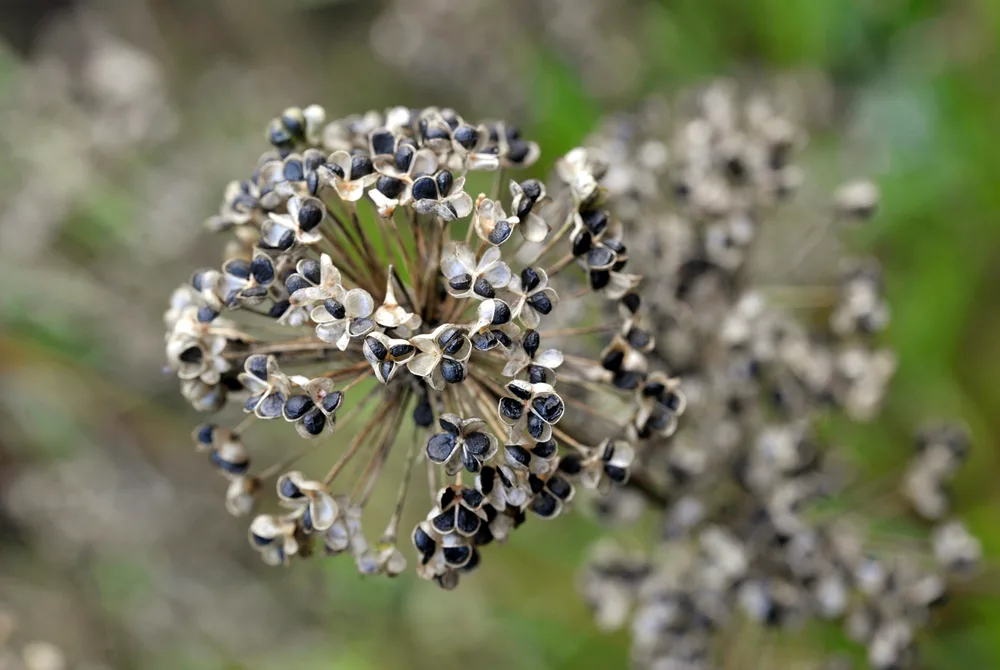
Sow onion seeds early in the year and you can grow onions bigger and better than those you have managed to grow before.
Sow seeds of large onion varieties like ‘Bunton’s Showstopper’ and ‘Ailsa Craig’ indoors early in the year for large bulbs later in the season.
You can also sow early varieties of scallions for onion greens under cloches or in a greenhouse or polytunnel long before the soil properly warms in spring.
Try varieties such as ‘Ichikura’ and ‘Summer Isle’ for example.
Onions can germinate from around 35F. But germination rates will tend to be higher if you can achieve temperatures of over 50F.
8. Leek
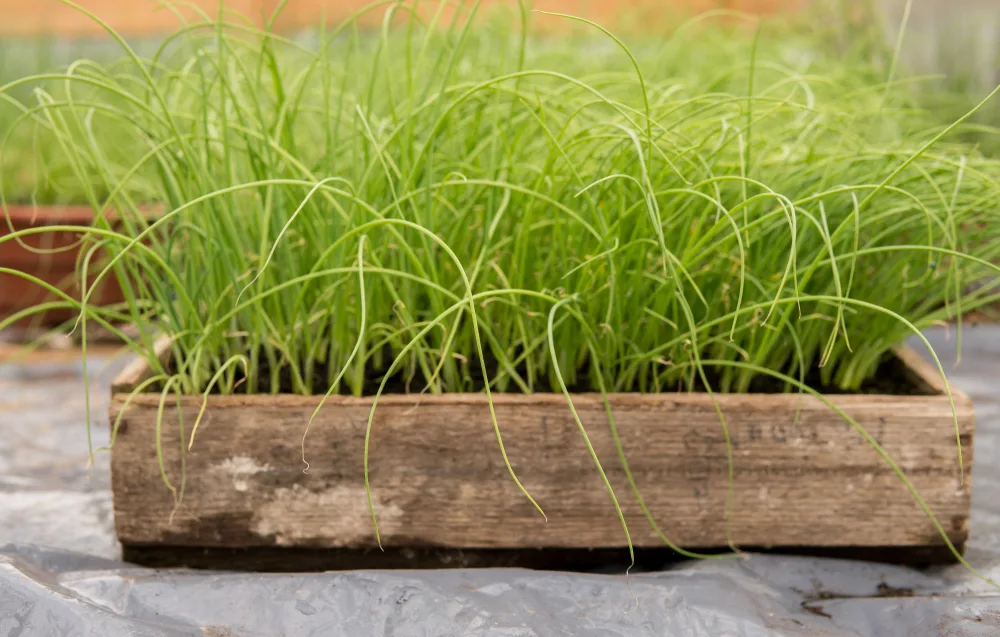
Leeks are another member of the allium family to consider sowing early.
They need a long growing season and so it is a good idea to get them started as soon as possible. Plan now for fat, healthy leeks next winter.
Leeks can also germinate from as low as 35F. But consider starting them indoors to get them off to the best start.
They will achieve the best germination rates at temperatures between 65F and 85F
9. Celeriac
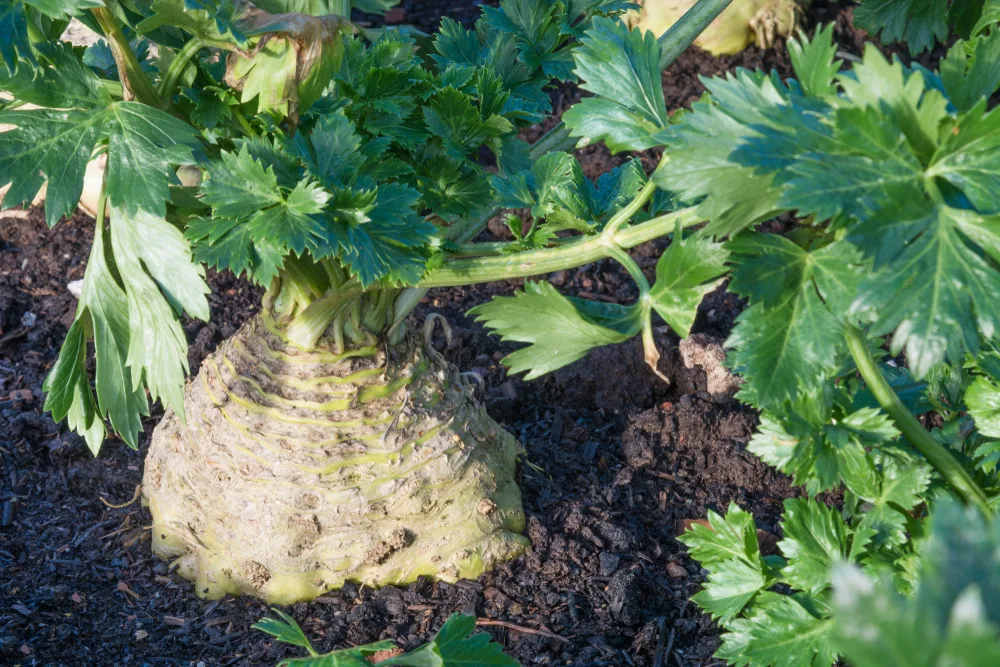
Celeriac is a hardy vegetable that is rather slow growing. So this is another crop to consider sowing indoors or under cover early in the year, before spring arrives.
Start this crop early and you should have large bulbs for eating towards the tail end of the year.
During germination, try to maintain temperatures of around 60F-70F. Though you can then grow on your celeriac seedlings in much cooler conditions.
10. Celery
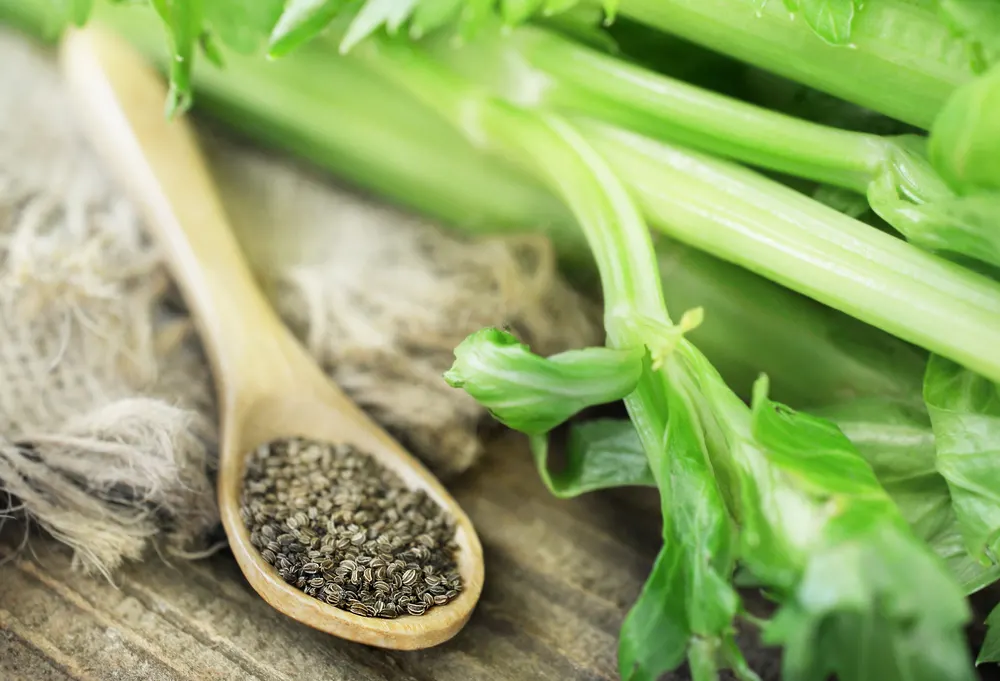
Celery is also a great choice for early sowing. For early sowing indoors or under cover, it is best to choose bolt-resistant celery varieties like, for example, ‘Lathom Self-Blanching’.
Celery seeds will germinate from temperatures of around 40F. But the optimal temperature range for the germination of these seeds is between 60F-70F.
11. Lettuce
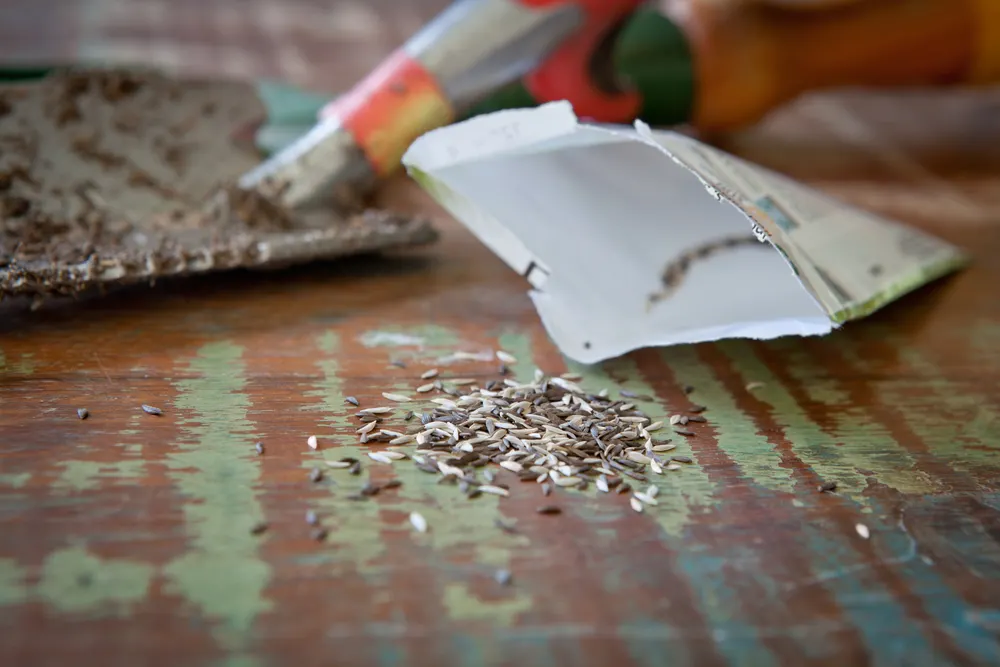
One of the very easiest plants to grow throughout the year is lettuce.
There are plenty of cut and come again varieties that can be grown inside on your windowsills or outside (especially with a little protection) throughout the whole year.
Choose the right lettuce varieties and you can sow and grow this crop literally all year round.
Lettuce seeds can germinate in temperatures as low as 35F and will produce good germination rates at temperatures anywhere between 40F and 80F.
12. Spinach & Other Early Greens
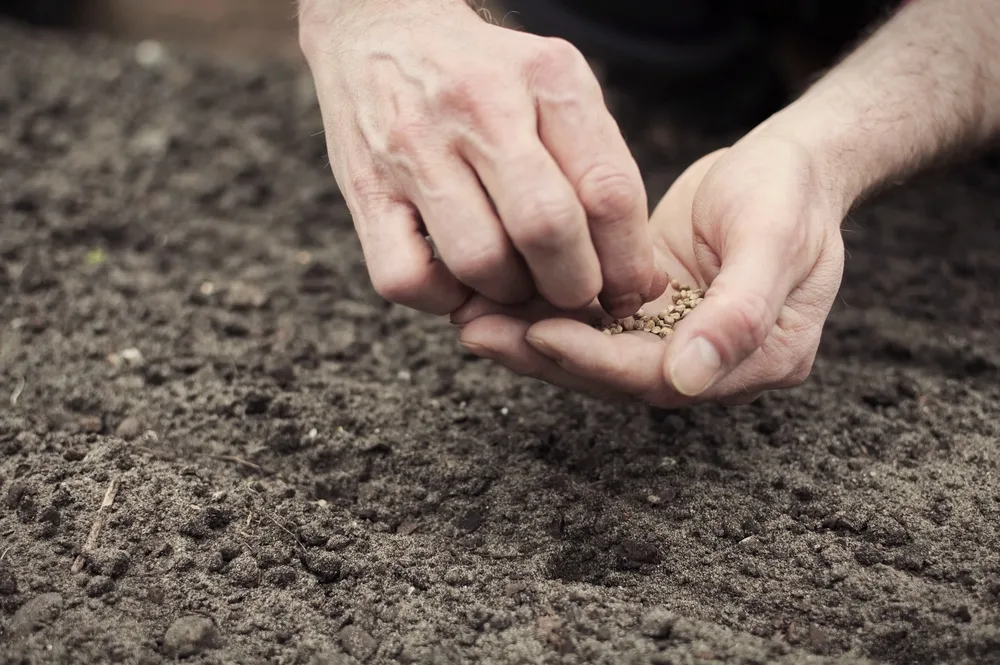
Lettuce is not the only leafy green that you can sow early in the year.
If you can provide the right growing conditions, spinach and other early greens (such as a range of Asian leafy green vegetables) can also be started very early in the year.
Spinach seed can also germinate in temperatures as low as 35F. But germination rates will be improved if you can keep the temperatures above 45F (and below 75F).
13. Brassica Seeds to Sow
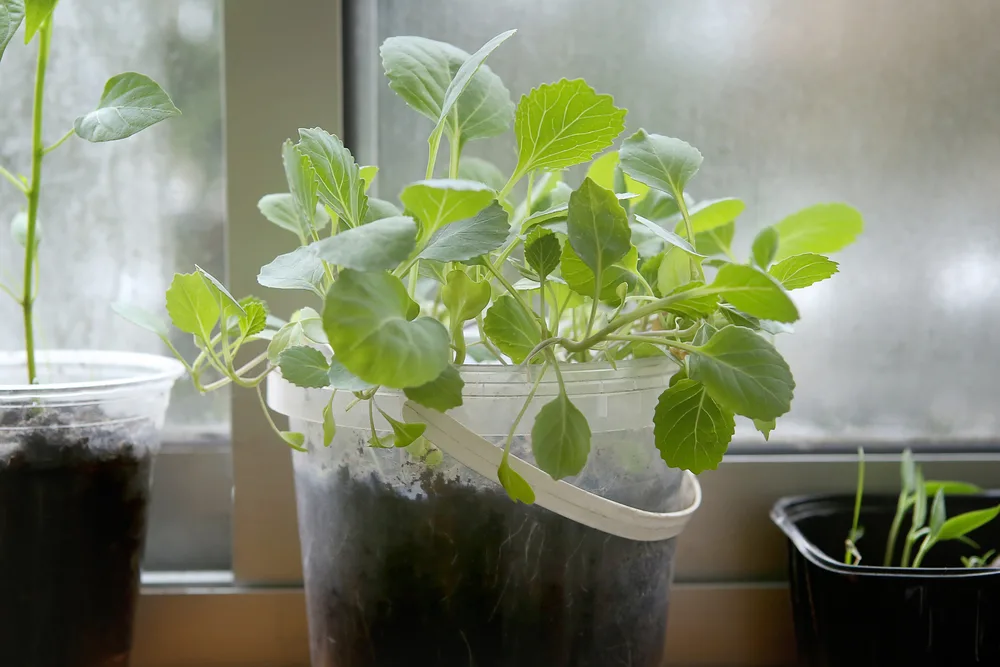
Plants in the brassica family, such as cabbage, kale, cauliflower etc. are also great options for early sowing. February is not too early to sow a range of seeds to be transplanted into your garden once the weather warms.
But if you are growing indoors only, brassica family plants can also be great choices for micro greens.
You can sow and grow these on a sunny windowsill throughout the year – including right through the winter months.
Many brassicas will germinate in temperatures as low as 40F. But most have an optimal range of between around 45F to 85F.
14. Early Carrots
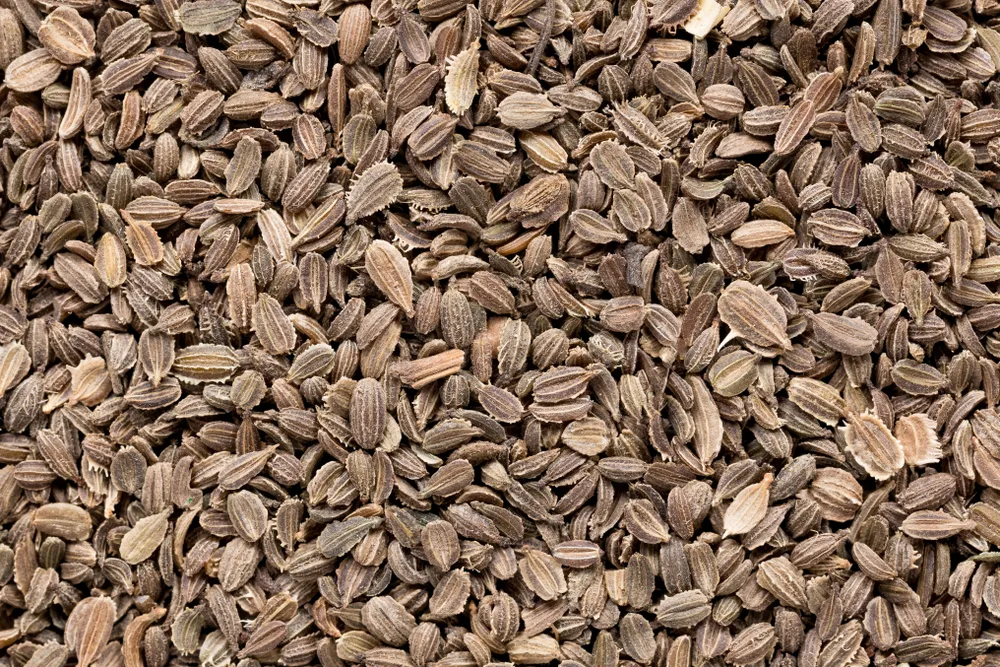
In milder regions, February can be a great time to sow early carrots outside under cloches or in an undercover growing area. This is especially true if you have a light and sandy soil that warms more quickly.
Choose carrot varieties intended for early sowing such as ‘Early Nantes’.
Carrots can germinate from around 40F. but may be rather slow to do so. Ideally, you should provide temperatures for germination of between 45F and 85F.
One benefit of sowing carrots early is that you may get a crop out of the way before carrot fly becomes a problem.
If carrot fly is a problem where you live, companion planting with alliums such as onions or garlic can also help.
15. Beets & Other Root Crops
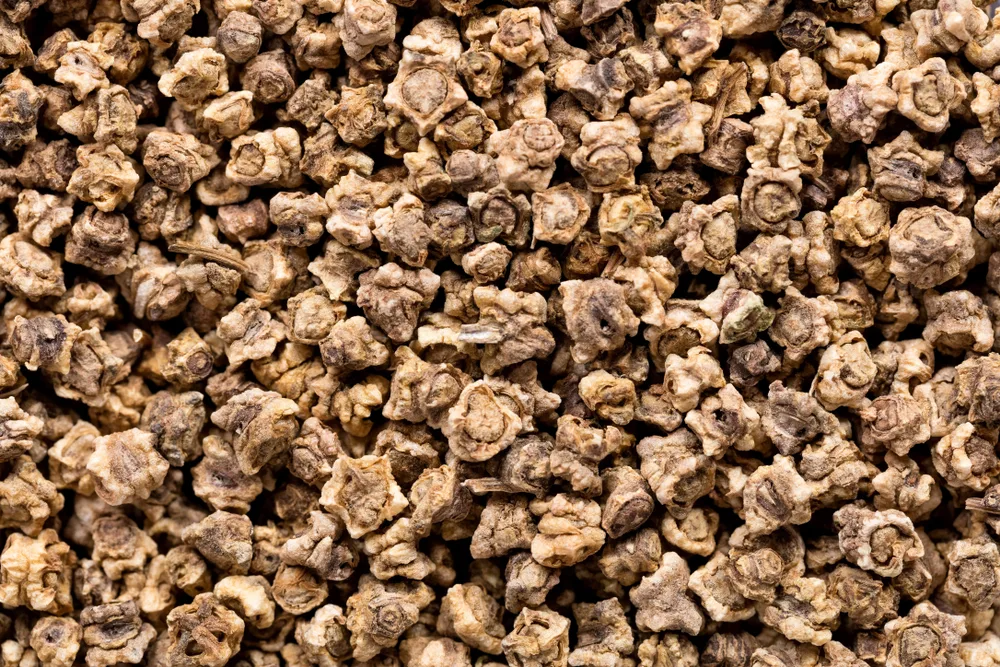
Finally, towards the tail end of winter, there are also a range of other root crops that you can sow for a head-start before spring. Beets, for example, you can sow under cover from February.
A range of other root crops, including, for example, parsnips and radishes, are also options for sowing under cover in your garden before spring.
Beets will germinate from 40F, with an ideal range of 50F-85F.
Parsnips will germinate in even lower temperatures, from 35F. But will also do best from 50F, up to around 70F. Radishes germinate from 40F, with an optimal range of 45F-90F.
These are just 15 of the seeds to sow before spring in your edible garden.
There are, of course, also plenty of other options to consider. You can not only plant vegetable seeds but also seeds of flowering plants and herbs.
You can also plant potatoes under cover in containers before spring arrives for the earliest of first early crops.
Gardening in winter brings plenty of rewards later in the year. So be sure to get out there early to make the most of the growing season.
Where To Buy High Quality Seeds
The key to a successful vegetable garden begins with high quality seeds.



